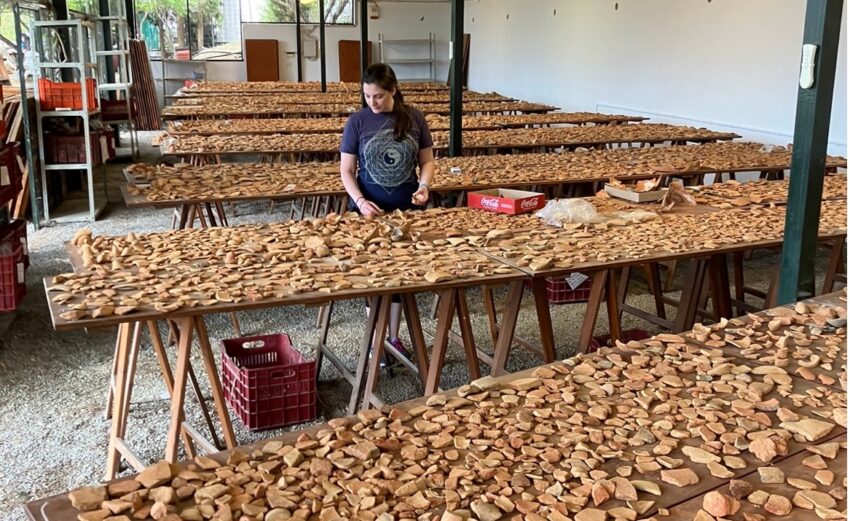By Lauren Wilson
Introduction
For my doctoral studies in the Tyler School of Art and Architecture at Temple University, I am researching the art history and archaeology of Minoan pottery (BCE Crete artifacts). For the Cultural Analytics Certificate’s culminating project, my digital research has focused on developing a comprehensive dataset, metadata profile, and map visualizations of the relevant artefacts to my dissertation.
My dissertation, “The Pottery from the House in Meïdani Square, Kastelli,” concerns Minoan ceramic regional styles, trade, consumption practices, and elite interaction within the Eastern Mediterranean. I examine the Middle Minoan (MM) I-II (ca. 1900 – 1700 BCE) pottery deposit excavated from a building discovered in the Meïdani Square at the Minoan site of Kastelli in the Pediada region on the island of Crete (see Fig. 1) for my dissertation project.
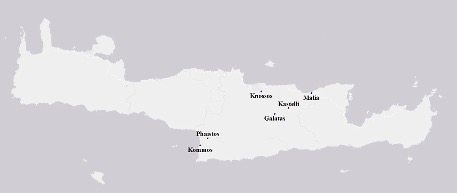
The study of the ceramic assemblage from the site at Kastelli is important because the pottery tradition of the Pediada has yet to be examined in extent. My research questions thus concern Minoan ceramic regional studies and how the pottery tradition of the Pediada fits into these studies.
Cultural Analytics Project
For my Cultural Analytics Certificate’s culminating project, I focus on tumblers (see Fig. 2), a type of drinking vessel from the Pediada. I apply digital methods of data collection mapping. This study is the first in-depth examination of MM tumblers discovered on Crete. I have created a metadata spreadsheet on MM tumblers and converted it into a visual map. Mapping data has helped me to examine ceramic regional patterns of exchange.
Furthermore, the examination of exchange patterns of MM tumblers might be a means to assign the larger ceramic assemblage from Kastelli to specific locations of production and to better understand craft traditions and trade throughout the eastern Mediterranean. As a case study, the Pediada gives me a unique vantage point for examining trade routes from within the eastern Mediterranean for my larger dissertation project.
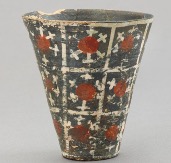
Dataset and Metadata
For my digital research, I began with the study of drinking vessels, in particular tumblers, because of the preliminary indications that they were specifically made for the Pediada region. To this end, I have conducted a complete search of all literature on MM tumblers found on Crete and organized them by site (see Fig. 3).
The data collected for analysis has included the site locations and coordinates that MM tumblers have been discovered at, the quantities of each of these findings, tumbler sizes, the vessels’ surface designs, notes on chronology, and more. With this metadata, using Microsoft Excel, I created a metadata spreadsheet that is hosted on TU Scholar Share, an open-access repository (link:).
The metadata spreadsheet has allowed me to assess many things about MM tumblers in addition to practices within the field of Minoan archaeology (see Fig. 3). For example, stylistic differences have occurred among the scholarship about Minoan tumblers. I have noticed a discrepancy in scholarship practices, where some scholars provided detailed information about the objects while others have provided very little within their catalogue entries.
These discrepancies have forced me to rethink how I will organize and purpose my own metadata, as well as have informed my practices in cataloguing ceramic artifacts. Additionally, the process of building the spreadsheet alone has helped me implement good data collection practices.
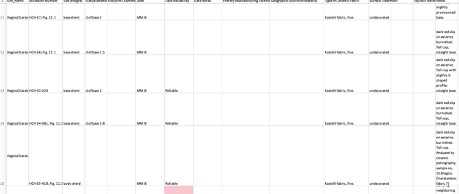
Mapping Tumblers in Crete
I converted the Microsoft Excel spreadsheet into a visual map. The spatial data of MM tumblers were visually presented using ArcGIS (Fig. 4). Notice that a heavy concentration of tumblers has been found in the regions of Central Crete. The implications of the data set show that the Minoan tumbler was a distinct shape of drinking vessel used and possibly produced in Central Crete. Mapping all locations of tumblers has been useful to my study in examining the range of stylistic characteristics and sizes of tumblers across Crete, as well as examining where the tumblers were manufactured and distributed.
Computational methods, such as geographic information system (GIS) mapping, has allowed me to digitally present the data and assess spatial and stylistic patterns between the different MM ceramic regions on Crete. This part of my project’s framework of study aligns with current methods in scholarship in surveying a larger scope of land area to go beyond the individual site-level and to see larger viewpoints.
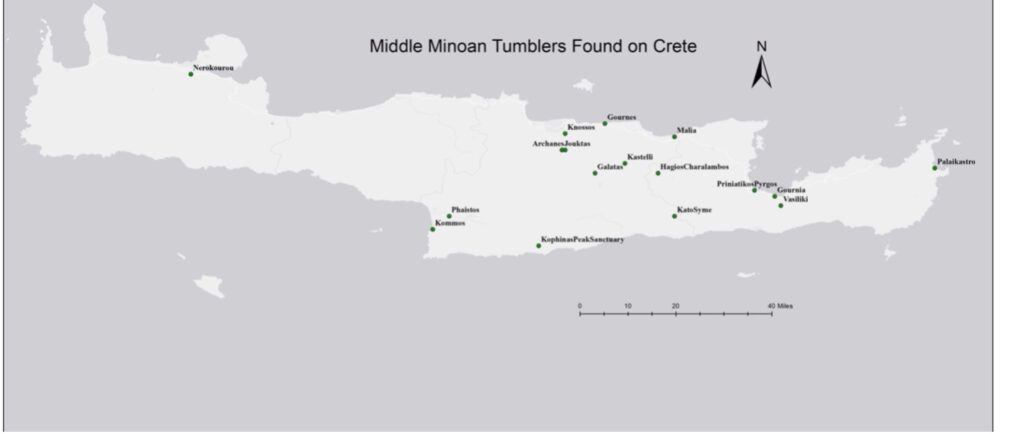
Final Remarks
Overall, my Cultural Analytics Certificate’s culminating project has been beneficial to my dissertation research because it has allowed me to engage with the material in a more immersive way. This digital project offers others looking to learn about this subject a new way to engage with the material through using mapping tools to observe spatial patterns from the data on MM tumblers.
The data collected is helpful to scholars in the analysis of the Kastelli pottery deposit from this formative period in Minoan ceramic history. This project advances scholarship in the field by using digital methods to approach the study of prehistoric pottery. It also presents a model to others for data collection and ways in which digital methods can be used to analyze prehistoric exchange patterns through studying historical artefacts.
During the summer of 2023, I will travel to the island of Crete. At the Institute for Aegean Prehistory Study Center for East Crete (INSTAP-SCEC), I will be analyzing 90,000 ceramic sherds from the building discovered in the Meïdani Square at the site of Kastelli. This analysis will contribute to my larger dissertation project on the characterization of Kastelli ceramics. My study will be informed by the digital methods I have employed during the CAC program to visually present, collect, organize, and house my data.
During the CAC Practicum I found both essential elements of data gathering and analysis, as well as, experimented with other directions of digital methods such as 3D modeling and laser printing. I built a basic 3D model of the central court at Knossos as a phenomenological study to analyze architectural space and the act of space-making. Laser printing was applied to my study as a means of viewing surfacing markings on the exterior of pottery vessels. Overall, the digital methods applied in my culminating project are essential to my research and success for the dissertation as well as the art historical study of Minoan pottery.
Selected Bibliography
Furumark, A. 1972. Mycenaean Pottery: Analysis and Classification (Mycenaean Pottery 1), Stockholm.
Knappett, C. 2005. Thinking Through Material Culture: An Interdisciplinary Perspective, Philadelphia.
